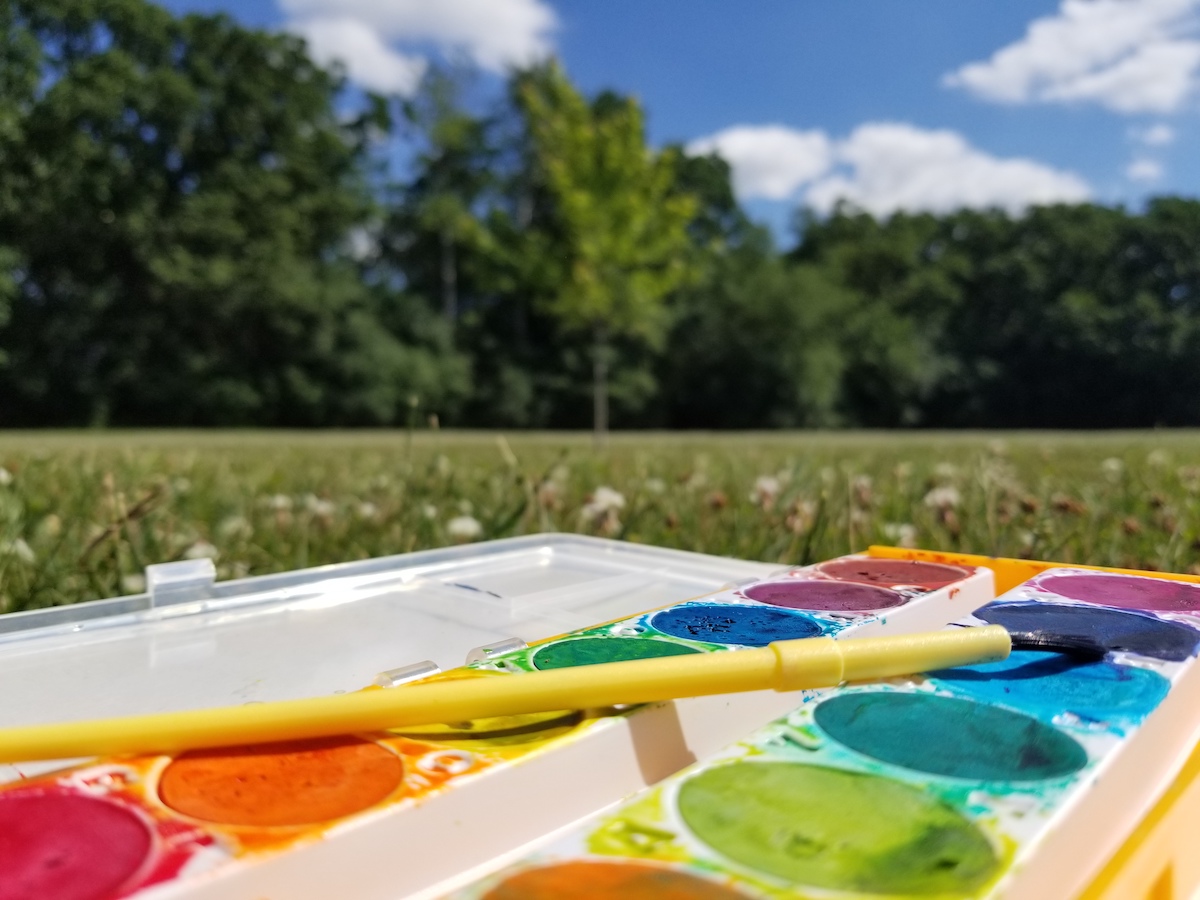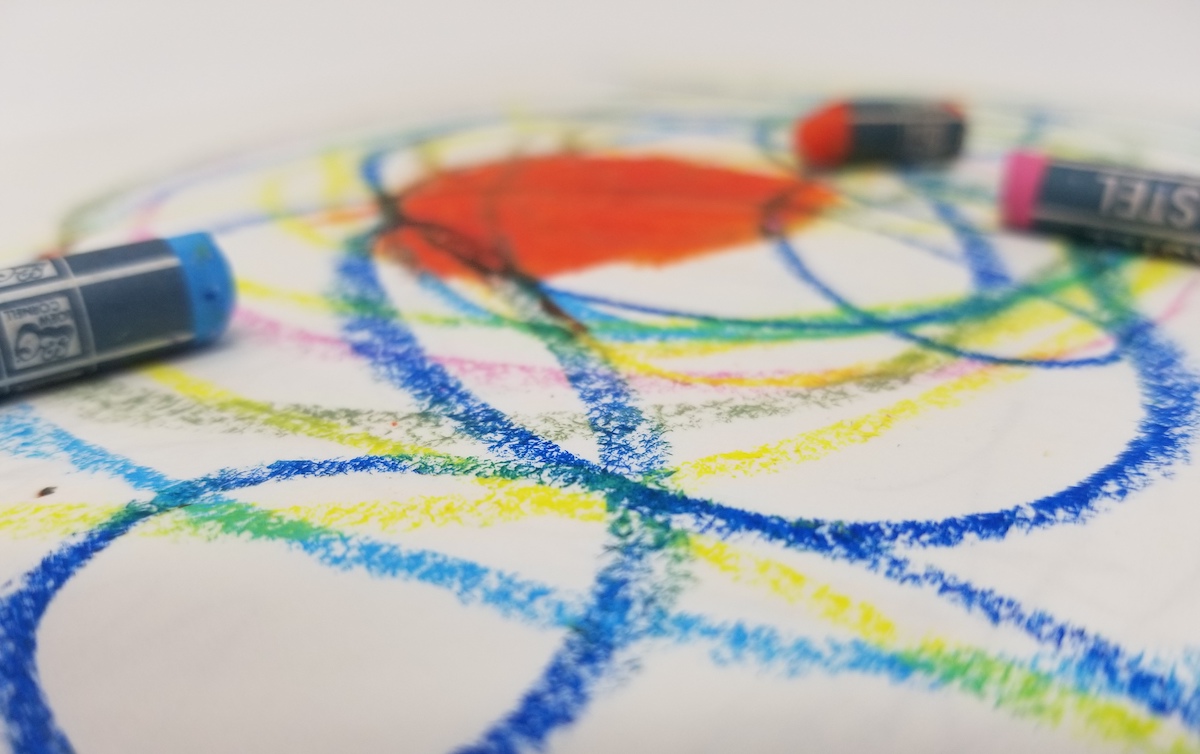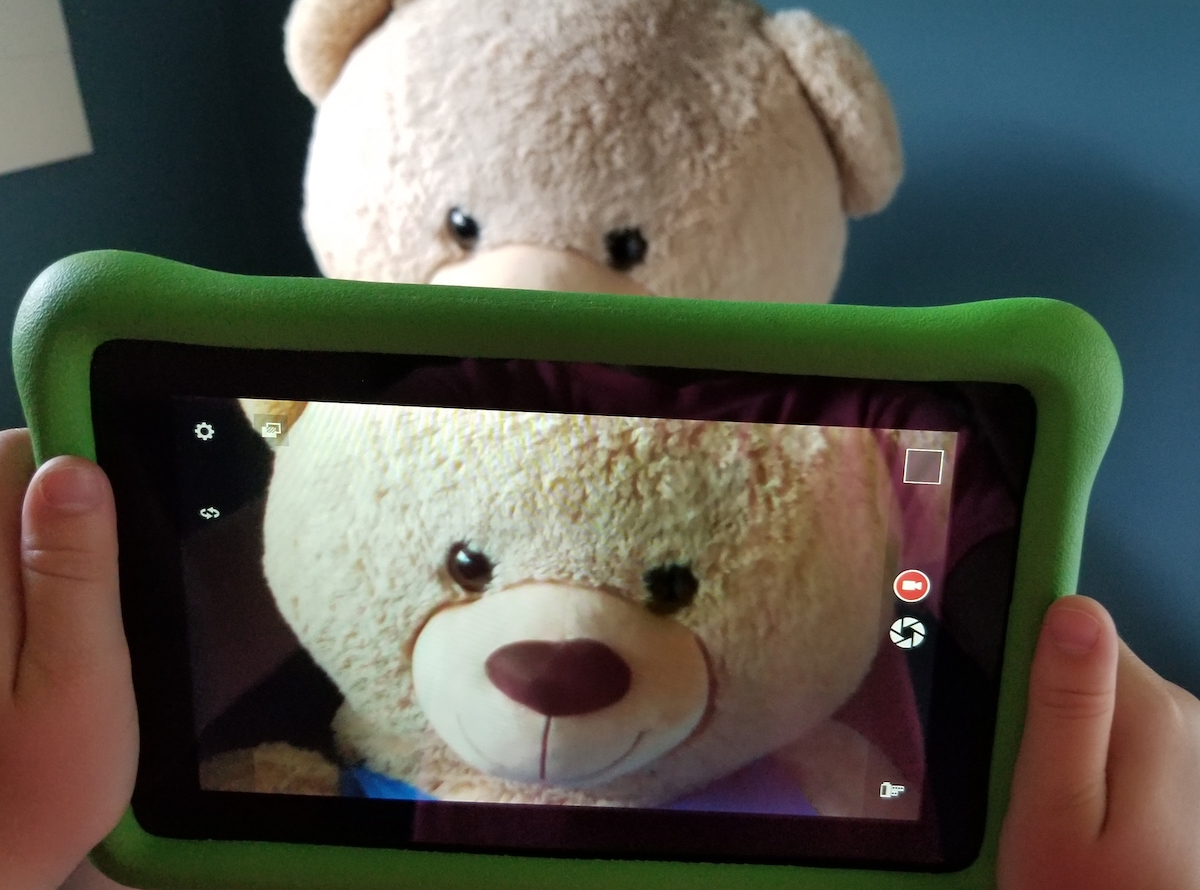Summer is a time for many things for art teachers, including the time and space to make your own art. Creating artwork that’s not for an example in your classroom can reconnect you with your artist roots. For some, however, this artistic dream dissipates quickly, especially if your own children are dependent on your every move. Spending hours in a studio is simply never going to happen. While it might look a little different (okay, a lot different) than it used to, creating with your own children can be a fun and rewarding experience. Introducing your children to different forms of art is a great way to connect with your family. Your children will also get to see you being an artist. It will also give you a chance to get your hands messy and do some artmaking. Here are a few ideas to help get you and your children started.
1. En Plein Air
One challenge with making art at home with your kids is finding a suitable space. You might not have furniture or flooring you want to get messy or risk a paint stain. So, ditch the indoors and head outside. Take your young artists to a fun outdoor spot where they can be loud and messy. This is a great chance to get out in nature like an open field or the woods.

Find a spot they can safely explore during their many artistic breaks, while you continue to work. Watercolor is a great medium for these types of experiences. Instead of bringing water, you might be able to find a water source in a drinking fountain or pond. Then, all you need is a brush, cup, watercolors, and paper.
2. Life Drawing
Children love having your undivided attention. Modeling for them as they draw or paint you can be a fun experience that gets you both laughing. You can help keep them on track by pointing out things they may have forgotten. When they’ve officially lost their focus, go ahead and switch places. Kids are perfect models for fast gesture drawing since they can’t sit still for very long. They’ll also crave any goofy poses or positions. Using a timer in life drawing with your children can also be helpful to manage time and focus.
3. Scribble Art
Creating a foundation for your abstract piece can be done by children of all ages. Provide them with a tool and a lot of paper and have them make their own designs, lines, scribbles, and shapes. Their inability to mess up can be refreshing. As your child creates these pieces, which will likely be very fast, you now have a range of canvases at your disposal.

Take their paper and find your composition by rotating and cropping the image. Then, use any medium you prefer to work into the spaces and create representative imagery or just go abstract. The problem solving of making something out of nothing can be a fun challenge to feed your artistic craving.
4. Scavenger Hunt
Create a list of fun photo prompts for you and your child and head out on your hunt. Using a tablet or phone, investigate spaces in search of the right image. Tailor the prompts to different ages involved for everyone to have a challenge. This activity is a fun way for children to learn the elements and principles.

They can look for shapes and lines, or respond to prompts that require some ingenuity. For example, “Find something sticky” or “How an animal sees the world.” You can also use this as a chance to practice some digital photography. If you have multiple children and devices, check out the GooseChase app where players can compete and upload photos to finish the game.
5. Adventure Collage
Perhaps the idea of materials like paint sounds too messy. Or maybe your child is continuously on the move. Collecting materials from a daily adventure can set you up to create a collage together. Start by creating your itinerary and the places you want to stop. Think about spaces where you might find good materials like candy stores, restaurants, or the library. If you need an added challenge, create a list of prompts like a scavenger hunt to help your child look for something specific. Be sure to remember a bag or container to carry your collection throughout the day. When you’re finished, and your child has burned off some energy, you can collaborate and glue down your artifacts into a fun collage.
Children are great, but not always ready to give you the time and space to be back in the studio, creating your own art. Finding ways to collaborate with your kids is an exciting way to connect as a family and get your creative juices flowing. Think about which type of activity is best for your child and what materials you have at home. You might not come away with a piece for your portfolio, but it will get you making again and exercising your creativity.
What are other activities to create art with your child?
Which child-friendly art material do you recommend?
Magazine articles and podcasts are opinions of professional education contributors and do not necessarily represent the position of the Art of Education University (AOEU) or its academic offerings. Contributors use terms in the way they are most often talked about in the scope of their educational experiences.





